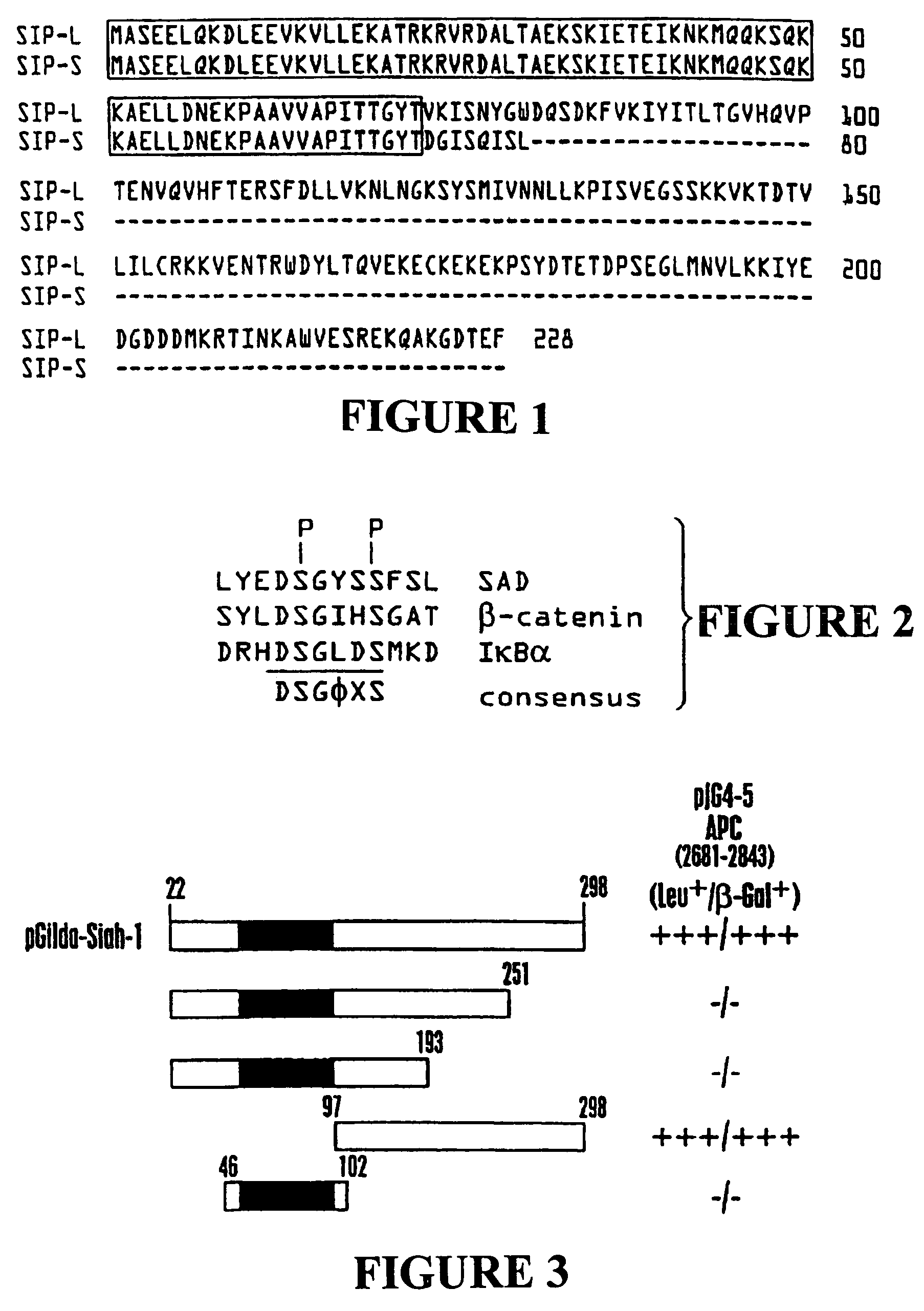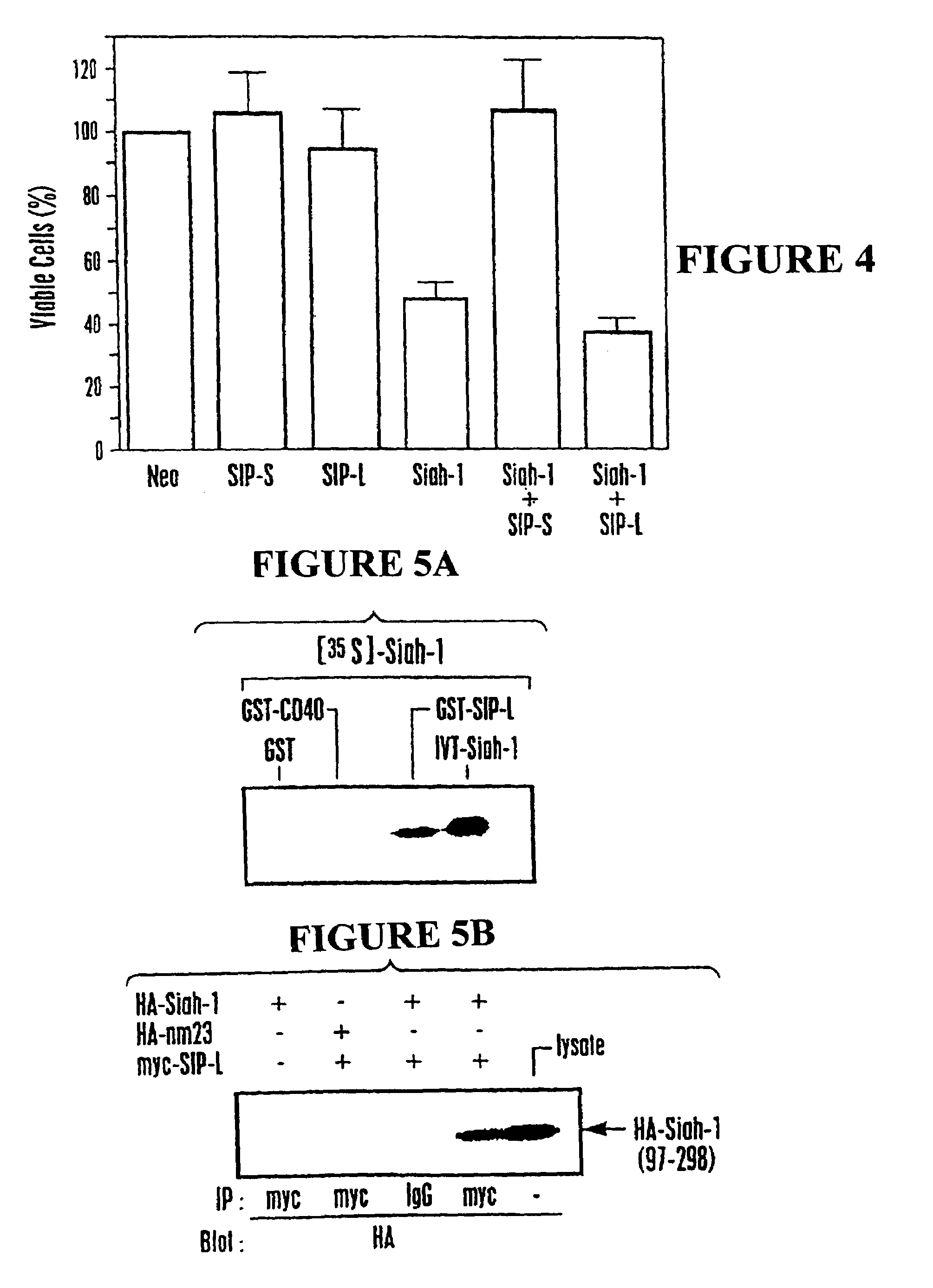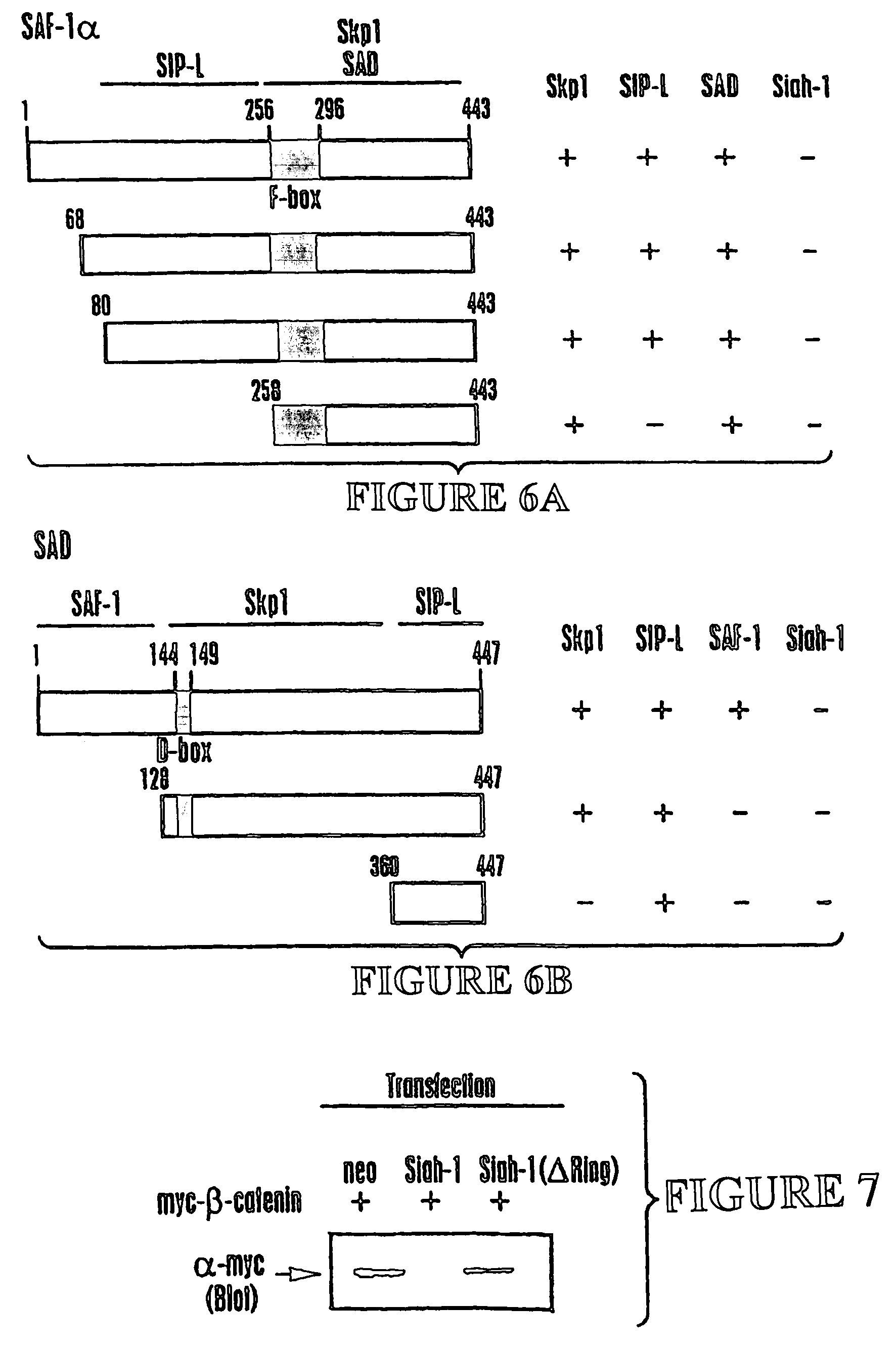Nucleic acid encoding proteins involved in protein degradation, products and methods related thereof
a technology applied in the field of nucleic acids and proteins encoded thereby, can solve the problems of unclear function of the siah-mediated-protein-degradation family protein, and achieve the effect of improving the efficiency of the enzyme and reducing the number of amino acids
- Summary
- Abstract
- Description
- Claims
- Application Information
AI Technical Summary
Benefits of technology
Problems solved by technology
Method used
Image
Examples
example 1
Yeast Two-Hybrid Screen of BAG-1 Binding Proteins to Obtain cDNA Encoding Siah-1α
[0188]The mouse BAG-1 amino acid sequence was cloned into the pGilda plasmid and used as bait to screen a human Jurkat T-cell cDNA library. From an initial screen of ˜1.6×107 transformants, 298 clones were identified that trans-activated the LEU2 reporter gene based on ability to grow on leucine-deficient media. Of those, 30 colonies were also positive for β-galactosidase. These 30 candidate transformants were then cured of the LexA / BAG-1 bait plasmid by growth in media containing histidine and then mated with each of 5 different indicator strains of cells containing one of following LexA bait proteins: BAG-1 (1-219), Bax (1-171), v-Ras, Fas (191-335), or Lamin-C. The mating strain was RFY206 (MATa, his3D200, leu2-3, lys2D201, ura3-52, trp1D::hisG), which had been transformed with pGilda-BAG-1 or various control proteins and selected on histidine-deficient media. This resulted in 23 clones which display...
example 2
Isolation of Full-Length Human Siah-1α cDNAs
[0189]To obtain the complete sequence of human Siah-1, cDNA fragments containing the 5′ end of human Siah 1 were PCR-amplified from Jurkat randomly primer cDNAs by using a forward primer 5′ GGGAATTCGGACTTATGGCATGTAAACA-3′ (SEQ ID NO:42) containing an EcoRI site and a reverse primer 5′ TAGCCAAGTTGCGAATGGA-3′ (SEQ ID NO:43), based on sequences of EST database clones (NCBI ID: AA054272, AA258606, AA923663, AA418482, and AI167464). The PCR products were digested with EcoRI and BamHI, then directly subcloned into the EcoRI and SalI sites of pcI plasmid into which the cDNA derived from pJG4-5-Siah (22-298) had previously been cloned, as a BamHI-XhoI fragment. The complete human Siah-1α (cDNA and amino acid sequence is set forth in SEQ ID Nos:1 and 2, respectively. The human Siah-1α sequence contains 16 N-terminal amino acids that are not present in the human Siah-1β protein.
example 3
Yeast Two-Hybrid Screen of Siah-1 Binding Proteins to Obtain cDNA Encoding SIP-L and SIP-S
[0190]Human Siah-1α cDNA encoding amino acids 22-298 of SEQ ID NO:1 (corresponding to amino acids 6-282 set forth in Nemani et al., supra) was cloned into the pGilda plasmid and used as a bait to screen a human embryonic brain cDNA library (Invitrogen) in EGY48 strain S. cerevisiae. From an initial screen of ˜2.0×107 transformants, 322 clones were identified that trans-activated the LEU2 reporter gene based on ability to grow on leucine-deficient media. Of those, 32 colonies were also positive for β-galactosidase. These 32 candidate transformants were then cured of the LexA / Siah-1 bait plasmid by growth in media containing histidine and then mated with each of 5 different indicator strains of cells containing one of following LexA bait proteins: Siah-1 (22-298), Bax (1-171), v-Ras, Fas (191-335), or BAG-1. The mating strain was RFY206 which had been transformed with pGilda-Siah-1 or various con...
PUM
 Login to View More
Login to View More Abstract
Description
Claims
Application Information
 Login to View More
Login to View More - R&D
- Intellectual Property
- Life Sciences
- Materials
- Tech Scout
- Unparalleled Data Quality
- Higher Quality Content
- 60% Fewer Hallucinations
Browse by: Latest US Patents, China's latest patents, Technical Efficacy Thesaurus, Application Domain, Technology Topic, Popular Technical Reports.
© 2025 PatSnap. All rights reserved.Legal|Privacy policy|Modern Slavery Act Transparency Statement|Sitemap|About US| Contact US: help@patsnap.com



